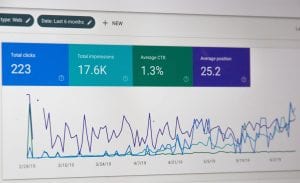Data-driven and customer-oriented businesses rely on qualitative and quantitative data. And, gaining insight into customer needs and behaviors is your top priority.
In today’s competitive business landscape, customer-centricity is key to success. Businesses are shifting to the data-driven approach to improving user experiences. Thanks to the evolution of digital technologies, analyzing customer data has never been simpler.
Here is how to gain insight into customer needs.
Create Customer Surveys
One of the most effective ways to collect customer feedback is to create customer surveys. In the era of cloud technologies, you do not have to waste money on printed questionnaires. Instead, generate them online.
You can create various survey types, including:
- Net Promoter Score (NPS) surveys
- Customer Satisfaction Score (CSAT) surveys
- Customer Effort Score (CES) surveys
- Visual rating surveys
- Custom surveys
Although you may have various questions for your customers, remember they do not have time to answer them. A five-page document would only discourage them from submitting feedback.
Therefore, keep your surveys to the point and concise. Ask straightforward questions and eliminate any unnecessary phrasing. If you are not sure how to design a user-friendly survey, explore these examples to get started.
Leverage Predictive Analytics
Predictive analytics tools are the treasure trove of customer information. With AI and ML algorithms, businesses can automatically collect and analyze large quantities of data.
These tools analyze your company’s historical data. Based on it, they unveil patterns in customer habits, requirements, and purchasing behaviors.
That way, ML algorithms transform customer data into actionable future insight. That way, your business can better prepare for the upcoming market trends.
Harness the Power of Social Networks
Tech-savvy customers prefer natural and informal interactions with brands. That is where social networks shine. Consumers use these channels to discover brands, share user-generated content, get feedback from brands, and share shopping experiences.
Given that, social networks are an invaluable source of customer information. Here is how to get the most out of them:
- Publish a link to your online survey to increase its visibility.
- Use social media monitoring tools. They inform you when a user mentions your brand or uses your hashtag. That way, you can stay on top of customer interactions and measure their sentiment.
- Encourage customers to review and rate your business on social networks.
- Conduct a simple social media poll on Twitter, Facebook, or Instagram Stories.
- Host a live Q&A session on Facebook and invite customers to provide suggestions and ask questions.
- Ask questions on your social media posts and inspire followers to leave comments.
- Use social media analytics tools to analyze your key metrics. Measure the performance of your content on these channels and understand what resonates with your target audience.
Ask for Customer Feedback after Checkout
You want to know what inspires customers to purchase from you. When a customer presses the “Buy” button, redirect them to your customer satisfaction survey. Keep the survey short, relevant, and easy to read to inspire consumers to take it.
You may want to ask the following questions:
- How would you rate your overall experience on a 0-5 scale?
- What did you like the most about the buying experience?
- What can we do to improve your buying experience?
Sure, do not neglect the power of abandoned purchases. The goal is to understand the why behind a ditched shopping cart. Therefore, always ask a website visitor what prevented them from finalizing the purchase. By understanding the common gaps in the checkout process, you can eliminate them and decrease your shopping cart abandonment rate.
Use Real-Time Usability Testing Tools
Real-time usability testing let you understand how people interact with your digital products. That is the easiest way to understand their experiences and perceptions.
For instance, you can deliver a prototype of your website to real users and observe their behaviors online. By monitoring how they navigate your website, you can recognize their common frustration points. That is the opportunity to eliminate website performance issues and keep it more user-friendly.
You can use various usability testing tools, such as Maze, UsabilityHub, User Testing, etc.
Stay on Top of Website Analytics

Website analytics tools are the foundation of customer data. Google Analytics can serve as your solid starting point. It lets you monitor:
- Acquisition-related metrics, such as new users or website sessions
- Behavior-related metrics, such as the bounce rate, the exit rate, the session duration, pages/sessions
- Conversion-related metrics, such as the conversion rate, revenue, and transactions
By measuring Google Analytics metrics, you can take action and improve the overall website performance. Let’s take the example of the bounce rate – the percentage of visitors who abandon your website after visiting just one page. If your bounce rate is high, that means you may want to increase user engagement by creating interactive content, boosting page speed, or updating your CTA.
Conclusions
Data-driven and customer-oriented businesses rely on qualitative and quantitative data. And, gaining insight into customer needs and behaviors is your top priority. Make sure you develop a thorough customer feedback strategy and implement it strategically.


Join the conversation!